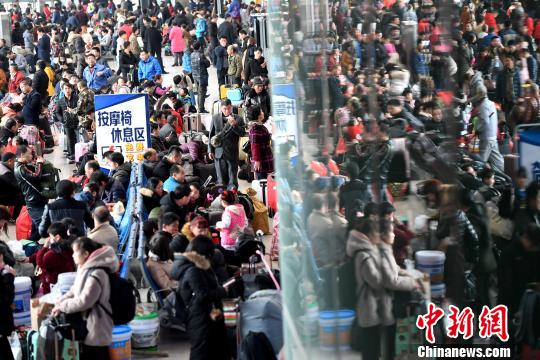China’s floating population starts to shrink

Migrant workers returning home (Photo/Zhang Bin)
While the total number of births in China may have exceeded 15 million in 2018, this figure shows a downward trend from the 17.2 million babies born in 2017. This decline, alongside more migrant workers moving home than ever, means China's floating population is in sharp decline, said an industry insider, China Business Network reported on Jan. 3.
In recent years, the sharp decrease in birth population has become an irreversible trend, and is expected to continue to drop, stabilizing at about 13 million, the insider said.
In addition to a declining birth rate, floating population groups which bring economic development dividends have also started to move home in higher numbers. However, experts say there is enormous potential for the transfer of this labor force to non-agricultural sectors, with statistics showing that at least 200 million people are involved in this process.
A report by the National Health Commission indicates that every percentage point increase in the proportion of urban floating population will create a 1-2.3 percent growth in GDP in the next 5 to 10 years. Population mobility is therefore connected to capital accumulation in urban areas.
The report also showed that without population fluidity, China’s GDP in 2016 would have only reached 44.8 trillion yuan, whereas it actually reached 74.4 trillion thanks to industrial transfer generated by population fluidity.
However, the floating population is shrinking. According to the National Bureau of Statistics, in 2017, this population had dropped by 820,000 compared with the previous year.
The report showed that the proportion of people aged 45 and above, which accounted for 22.8 percent of the total floating population in 2017, is dropping. More than 70 percent of those who returned to their hometown said they were reluctant to leave again for work.
The longing for a stable life, discouraging salaries, and deteriorating health conditions are the primary reasons that people choose to move back home, said Li Jianmin, a professor at the Institute of Population and Development, Nankai University.
Li said China’s floating population more commonly work in metropolitan areas rather than small and medium-sized cities, resulting in a low rate of contribution from the latter to national economic growth, which in turn affects their salaries and employment opportunities.
Big cities in eastern China create more demographic dividends, but expensive rents, problems purchasing property, education, college entrance exams, and social insurance policies don't take the concerns of migrant workers into consideration, forcing these people to go back home, which weakens demographic dividends, a scholar said.
Zhai Zhenwu, a demographer and president of the School of Sociology and Population Studies under Renmin University, believes that demographic benefits could be maintained.
Nearly 30 percent of the country’s labor force is employed in the primary industry, which includes agriculture, forestry and fishing, while the figure is only 3.2 percent in high-income countries, he explained, adding that this means there is massive potential for labor force transfer and upgrading of industrial structures.
Editor: John Li